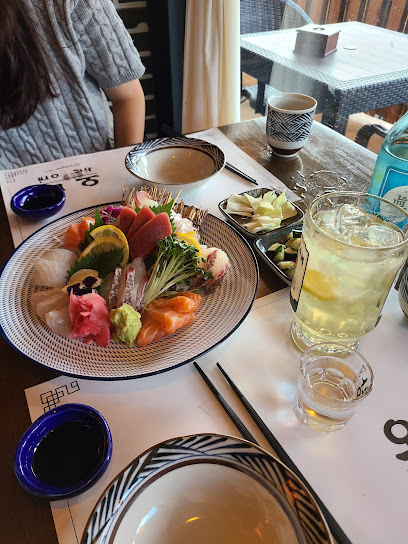
The Majestic Tomb of King Munmu: A Glimpse into Korea's Royal Past
Explore the Tomb of King Munmu in Gyeongju, a serene historical landmark that offers a glimpse into Korea's royal heritage and stunning views of the East Sea.
The Tomb of King Munmu is a remarkable historical landmark located in Gyeongju, South Korea. This ancient burial site offers visitors a unique opportunity to explore Korea's rich heritage, surrounded by serene landscapes and stunning views of the East Sea. As you walk through the area, you'll witness the beauty of the site and learn about the significant role King Munmu played in Korean history.
A brief summary to Tomb of King Munmu
- 26 Bonggil-ri, Munmudaewang-myeon, Gyeongju-si, Gyeongsangbuk-do, KR
Local tips
- Visit early in the morning or late afternoon for the best lighting for photography and a quieter experience.
- Wear comfortable shoes as you may want to explore the surrounding trails and nearby historical sites.
- Check local cultural events or festivals that may be happening nearby during your visit.
- Bring a picnic to enjoy in the serene surroundings of the tomb.
- Consider visiting during the cherry blossom season for a truly magical experience.
Getting There
-
Walking
From the Gyeongju city center, head southwest towards the Gyeongju National Museum. The museum is located at 1000-1, Hwango-dong, Gyeongju-si. It's a well-known landmark and a good starting point. From the museum, walk west towards the main road (Cheongun-ro) and turn left. Continue walking on Cheongun-ro for about 1 kilometer until you reach a traffic signal. At the signal, turn right onto Jukdong-gil. Follow Jukdong-gil for about 2 kilometers, passing through a residential area and a small park. You will eventually reach the intersection with Bonggil-ri. Turn left onto Bonggil-ri, and after about 500 meters, you will see the Tomb of King Munmu on your right. It is located at 26 Bonggil-ri, Munmudaewang-myeon, Gyeongju-si.
-
Bus
From the Gyeongju Intercity Bus Terminal, take bus number 10 or 11 towards the Munmudaewang-myeon area. The bus ride takes approximately 30 minutes. Get off at the 'Bonggil-ri' bus stop. After disembarking, walk straight for about 300 meters. You will find the Tomb of King Munmu on your left. The bus services are frequent, so you shouldn't have to wait long for your ride.
-
Taxi
If you prefer a more direct route, you can take a taxi from anywhere in Gyeongju. Simply tell the driver 'Tomb of King Munmu' or show them the address: 26 Bonggil-ri, Munmudaewang-myeon, Gyeongju-si. The taxi ride should take around 15-20 minutes, depending on traffic. Taxis are readily available and can be hailed on the street or booked via a taxi app.
Discover more about Tomb of King Munmu
Iconic landmarks you can’t miss
Tomb of King Munmu
0.0 km
Discover the Tomb of King Munmu, a historical gem in Gyeongju showcasing Korea's rich royal heritage and serene landscapes.

Columnar Jointing Observation Deck
5.9 km
Discover the stunning geological formations at the Columnar Jointing Observation Deck, a natural wonder in Gyeongju-si, South Korea.

경주 효소왕릉
19.5 km
Discover the historical allure of Joyang-dong in Gyeongju, where ancient sites and rich cultural traditions come together for an unforgettable experience.

Soepyeong children's park
21.0 km
Explore the fun-filled Soepyeong Children's Park in Ulsan, where adventure awaits for families and children of all ages.

울산테마식물수목원
21.2 km
Explore the lush landscapes and diverse plant collections at Ulsan Arboretum, a serene escape in the heart of Ulsan, South Korea.

Hilton Gyeongju
21.4 km
Discover the luxurious Hilton Gyeongju, your gateway to exploring the rich history and culture of South Korea's ancient capital.

울산 동축사 삼층석탑
22.0 km
Uncover the historical treasures of Wolsan Donggyeongsa Temple in Ulsan, a serene site that showcases Korea's rich cultural heritage and stunning architecture.
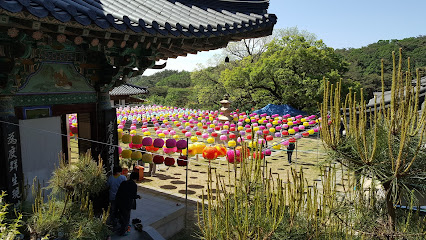
Dr. Choi Hyeonbae oesol Birthplace Memorial
22.1 km
Explore the tranquil Dr. Choi Hyeonbae Oesol Birthplace Memorial in Ulsan, a serene tribute to Korean history and culture amidst beautiful landscapes.

경주 헌강왕릉
23.4 km
Discover the serenity and artistry of Seokguram Grotto, a UNESCO World Heritage Site showcasing the best of Silla Dynasty's Buddhist heritage in Gyeongju.

경주 헌강왕릉
23.4 km
Discover Gyeongju, South Korea's ancient capital, where historical wonders and cultural treasures await every traveler.

Gyeongju Nangsan
24.0 km
Explore Gyeongju Nangsan, a historical site rich in cultural heritage and stunning views, perfect for every traveler seeking tranquility in South Korea.

Seondeogyeowangneung Royal Tomb of Queen Seondeok
24.0 km
Discover the majestic Seondeogyeowangneung Royal Tomb in Gyeongju, a UNESCO World Heritage site that encapsulates the grandeur of Korea's Silla Dynasty.

단지
24.5 km
Discover Danji in Ulsan, a vegetarian restaurant offering innovative dishes made from fresh, local ingredients in a warm and inviting atmosphere.

Ulsan Dongheon and Naea
25.0 km
Explore Ulsan Dongheon and Naea, a cultural gem that embodies the rich heritage and stunning landscapes of South Korea's vibrant city of Ulsan.

Ulsan Art Museum
25.1 km
Explore the Ulsan Art Museum, a cultural sanctuary in Ulsan, South Korea, where contemporary art meets traditional heritage in a stunning architectural setting.

Unmissable attractions to see
Gyeongju Gameunsa Temple Site
1.5 km
Explore the ancient ruins of Gyeongju Gameunsa Temple Site, a historical landmark showcasing the legacy of the Silla Kingdom in South Korea.

Najeong Beach
5.0 km
Discover the tranquil beauty of Najeong Beach in Gyeongju, a perfect coastal getaway for relaxation and adventure.

Columnar Jointing Padosori Path
5.5 km
Discover the breathtaking beauty and geological wonders of Columnar Jointing Padosori Path in Gyeongju-si, an unforgettable hiking destination.

Golgulsa Temple Stay
10.1 km
Experience the tranquility and cultural richness of Golgulsa Temple Stay in Gyeongju, a unique retreat for spiritual seekers and culture enthusiasts.

Golgulsa Temple
10.3 km
Discover the tranquility and spirituality of Golgulsa Temple, a hidden gem in Gyeongju-si that offers breathtaking views and rich cultural experiences.

Gyeongju Wind Farm
11.1 km
Discover the beauty of Gyeongju Wind Farm, where nature meets sustainable energy in stunning landscapes perfect for relaxation and exploration.

Gangdong Hwaam Columnar Joints
12.3 km
Explore the stunning Gangdong Hwaam Columnar Joints, a breathtaking natural wonder in Ulsan, South Korea, showcasing unique volcanic formations and serene landscapes.

Seokguram Grotto
13.8 km
Explore the ancient beauty of Seokguram Grotto, a UNESCO World Heritage Site showcasing stunning Buddhist art and serene natural landscapes.

Bulguksa Temple Museum
15.0 km
Explore the rich Buddhist heritage at Bulguksa Temple Museum in Gyeongju, a UNESCO World Heritage site showcasing Korea's spiritual past and ancient artistry.

Cheongungyo and Baegungyo Stairs
15.1 km
Explore the Cheongungyo and Baegungyo Stairs, where history meets natural beauty, in the heart of Gyeongju's rich cultural landscape.

Daeungjeon Hall
15.1 km
Discover the tranquil beauty and spiritual heritage of Daeungjeon Hall, a National Treasure in Gyeongju, South Korea.

Seokgatap (Sakyamuni Pagoda)
15.1 km
Discover the historical charm of Seokgatap, a UNESCO World Heritage Site and architectural marvel in Gyeongju, South Korea.

Bulguksa Temple
15.1 km
Explore Bulguksa Temple, a UNESCO World Heritage Site, and immerse yourself in the spiritual beauty of Korea's rich cultural heritage.

Tomb of King Wonseong of Silla
15.2 km
Discover the Tomb of King Wonseong of Silla, a serene historical site in Gyeongju that reflects Korea's rich royal heritage and ancient architecture.

Gwanmunseong
15.5 km
Discover Gwanmunseong, a historical landmark in Gyeongju, South Korea, showcasing the architectural brilliance of the Silla Dynasty amidst stunning landscapes.

Essential places to dine
Ran’s Kitchen 1974
15.2 km
Experience culinary innovation at Ran's Kitchen 1974 in Gyeongju-si - where tradition meets modern fusion flavors.

Sunrise Namwon Restaurant
15.3 km
Discover the flavors of Korea at Sunrise Namwon Restaurant in Gyeongju – where tradition meets taste.

느티나무
16.1 km
Savor authentic Korean cuisine at 느티나무 in Gyeongju—where tradition meets flavor in every delightful dish.
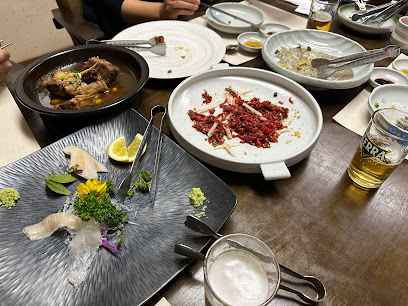
향적원
16.9 km
Experience authentic Korean cuisine at 향적원 in Gyeongju - where tradition meets flavor.

쑥부쟁이
17.0 km
Discover the essence of traditional Korean cuisine at 쑥부쟁이 in Gyeongju-si—an unforgettable culinary journey awaits you.

Master chef 인도 요리 전문점
17.8 km
Experience authentic Indian flavors at Master Chef Indian Restaurant in Ulsan - where every meal is a journey through India's diverse culinary landscape.

아비아채 하사정점 1920
18.1 km
Experience Ulsan's finest brunch at 아비아채 하사정점 1920 - where delicious flavors meet inviting ambiance.

Gyeongju
19.7 km
Savor authentic Korean cuisine amidst Gyeongju's rich history and vibrant culture.

서민식당
20.5 km
Discover the essence of Korean barbecue at 서민식당 in Gyeongju-si—where every dish tells a story.

레이크 사이드
21.4 km
Experience a diverse culinary journey at 레이크 사이드 in Gyeongju-si - where delicious flavors meet stunning views.

Silkroad
21.4 km
Experience authentic Chinese cuisine at Silkroad in Gyeongju - where every meal is a flavorful journey.

Restaurant
22.0 km
Discover authentic Korean cuisine in Gyeongju at this charming restaurant known for its traditional dishes and welcoming atmosphere.
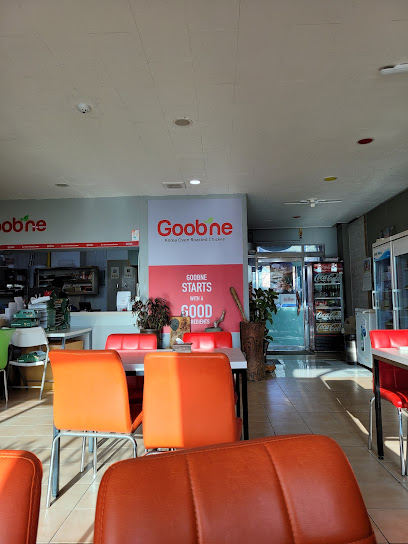
Yeo Gi Dang
22.9 km
Experience the essence of authentic Korean cuisine at Yeo Gi Dang in Gyeongju - a culinary journey through tradition and flavor.

유황오리전문점남촌
23.6 km
Savor authentic Korean duck delicacies in Gyeongju's charming atmosphere at 유황오리전문점남촌.

맷돌순두부
23.8 km
Experience authentic Korean cuisine at 맷돌순두부 in Gyeongju – a perfect blend of tradition and taste.

Markets, malls and hidden boutiques
Costco Wholesale - Ulsan Branch
21.3 km
Explore Costco Wholesale in Ulsan for unbeatable deals on a wide range of products, from groceries to electronics, all under one roof.

아식스 울산진장롯데마트점
21.4 km
Explore Asics Ulsan Jinjang Lotte Mart for top-notch sporting goods, stylish apparel, and expert advice for sports enthusiasts in Korea.

Gilsang-Ga
22.0 km
Experience the vibrant culture and diverse shopping options at Gilsang-Ga, a premier shopping mall in Gyeongju, Gyeongsangbuk-do.

그린쇼핑
22.6 km
Explore the vibrant shopping scene at 그린쇼핑 in Gyeongju, where local culture meets modern retail for an unforgettable experience.

보문콜로세
23.5 km
Shop, dine, and experience the vibrant culture at 보문콜로세, Gyeongju's premier shopping destination.

소품이야기
23.5 km
Explore the enchanting world of 소품이야기, a unique stationery store in Gyeongju offering beautifully crafted items reflecting local art and culture.

Hanwha Resort Gyeongju
23.8 km
Discover relaxation and cultural treasures at Hanwha Resort Gyeongju, where luxury meets the historical richness of South Korea.

경주특산명과의집
23.8 km
Discover the rich flavors of Gyeongju at 경주특산명과의집, where traditional Korean baking meets modern culinary artistry.

Pulmuwon
23.9 km
Discover Pulmuwon in Gyeongju, a health food store offering organic products and wellness items perfect for health-conscious travelers.

Jeongdowon
24.1 km
Explore Jeongdowon, the premier health food store in Gyeongju-si, offering organic delights and wellness insights for health-conscious travelers.

노을레드블라인드
24.4 km
Explore stylish window treatments at 노을레드블라인드, a unique blinds shop in historic Gyeongju, offering local craftsmanship and modern designs.

쁘띠지우
24.4 km
Explore 쁧띠지우 in Gyeongju for unique shopping and a taste of local culture amidst the historic beauty of South Korea.

아디다스
24.6 km
Shop the latest in athletic wear and footwear at the Adidas store in Ulsan, a hub for sports enthusiasts and fashionistas alike.

Hyundai Department Store
24.6 km
Explore Hyundai Department Store in Ulsan for a unique blend of modern shopping and traditional Korean culture.

아식스 울산점
25.3 km
Discover top-quality sportswear at Asics Ulsan, where performance meets style in a city rich with culture and activity.

Essential bars & hidden hideouts
Whasoo Brewery
21.0 km
Discover the essence of craft brewing at Whasoo Brewery in Gyeongju-si, where local flavors and artisanal beers come together in a vibrant atmosphere.

Habana
22.6 km
Experience the vibrant nightlife at Habana, Gyeongju's trendy bar, where local culture and modern cocktails blend seamlessly.

JJ's Bar
25.2 km
Discover the lively atmosphere and extensive drink selection at JJ's Bar, a must-visit nightlife spot in Ulsan, South Korea.

Music Lounge Ulsan
25.6 km
Discover Ulsan's vibrant nightlife at Music Lounge, the ultimate live music bar with captivating performances and exquisite cocktails.

달빛에술한모금
26.0 km
Enjoy a unique bar experience at 달빛에술한모금 in Gyeongju-si, blending local flavors with a cozy atmosphere for unforgettable evenings.

Thursday Party
26.3 km
Experience the vibrant nightlife of Ulsan at Thursday Party, where delicious cocktails and lively atmosphere await every night of the week.

Cima Bar
26.3 km
Experience the vibrant nightlife of Ulsan at Cima Bar, where great drinks and a welcoming atmosphere await you.
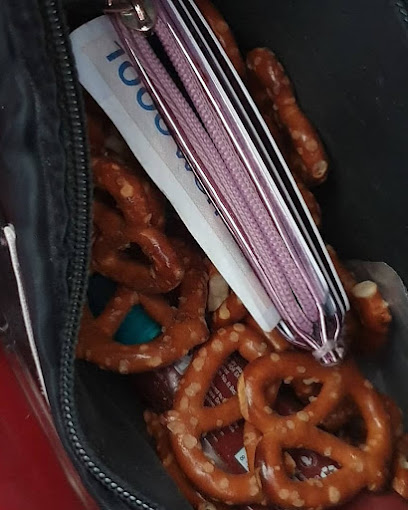
House Ulsan
26.3 km
Experience the vibrant nightlife at House Ulsan, a premier bar in Nam-gu offering delicious drinks and a lively ambiance for an unforgettable evening.

카츠
26.6 km
Explore the lively nightlife at 카츠, a premier bar in Ulsan, offering a diverse drink selection and a vibrant atmosphere for an unforgettable experience.

추억스케치
26.7 km
Discover Ulsan's vibrant nightlife at 추억스케치, a lively bar featuring live music and a welcoming atmosphere.

Yesterday, Below
26.9 km
Discover Gyeongju's nightlife at Yesterday, Below - a cozy pub offering local brews, lively entertainment, and a welcoming atmosphere.

Tuaen
26.9 km
Experience the vibrant nightlife at Tuaen, a premier bar in Ulsan offering unique drinks and a lively atmosphere for tourists and locals alike.

생활맥주 울산국가정원점
27.0 km
Immerse yourself in Ulsan's craft beer scene at Living Beer Garden, a lively bar with a unique selection and beautiful surroundings.

Little Rock
27.1 km
Experience the vibrant nightlife and rich culture of Little Rock, Arkansas, a hidden gem for travelers seeking adventure and charm.

Oni
27.1 km
Discover the vibrant nightlife at Oni, a must-visit bar in Gyeongju, offering exquisite drinks and a lively atmosphere for all to enjoy.
